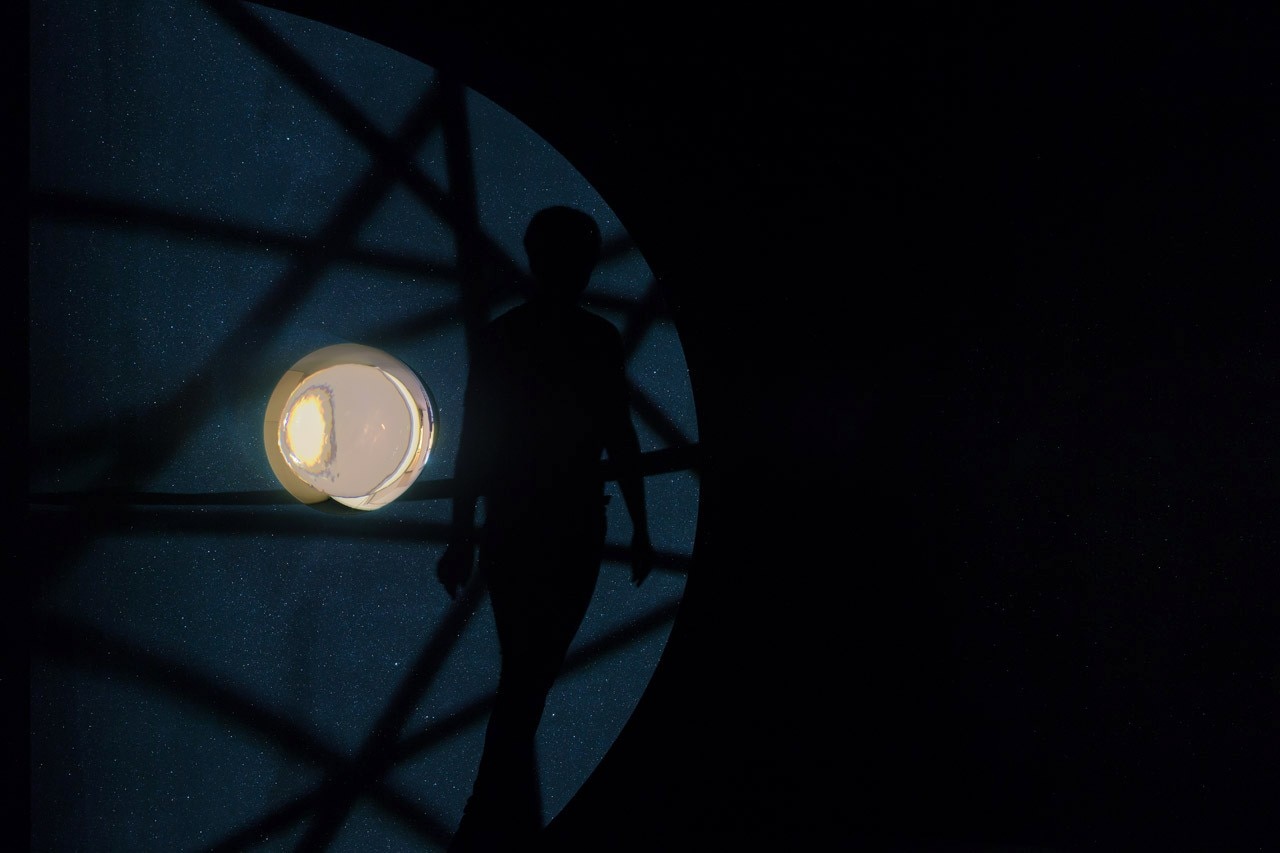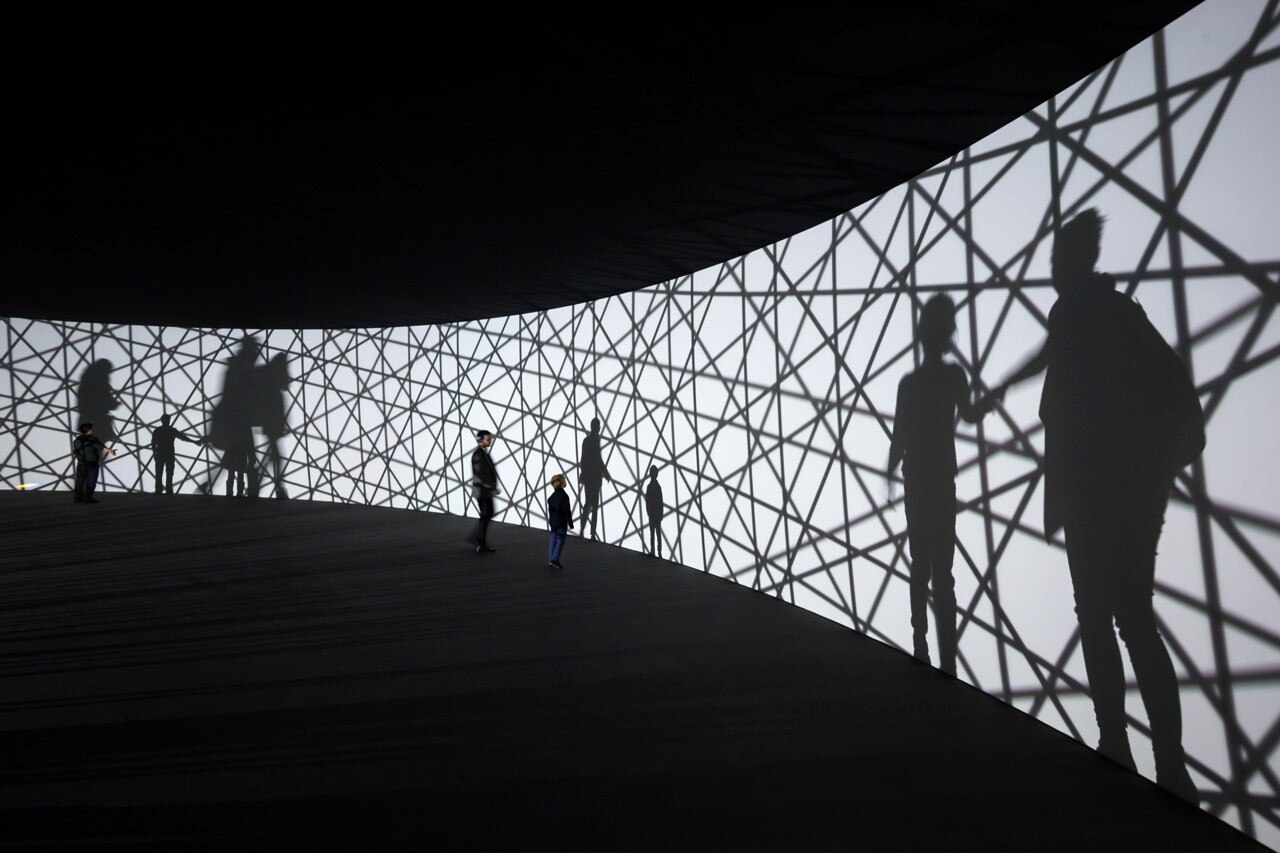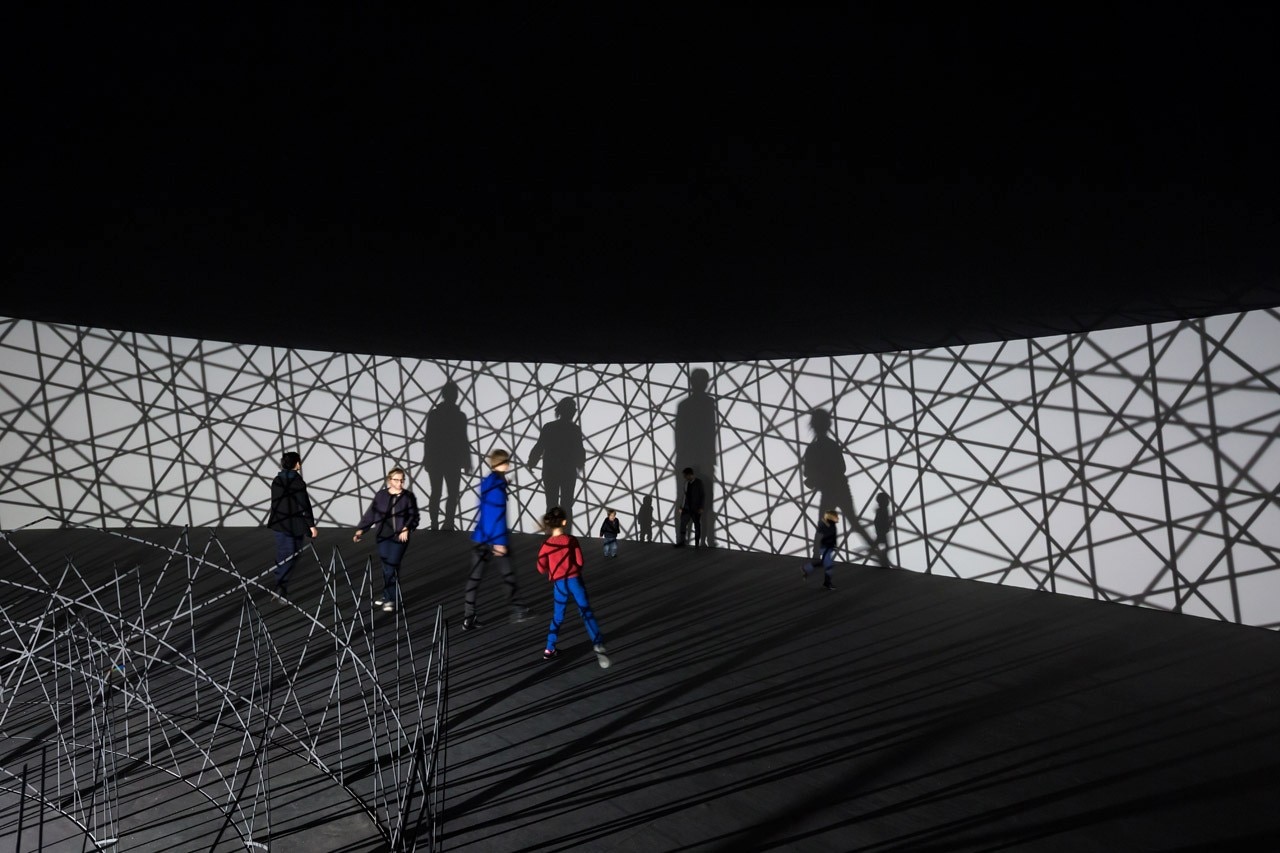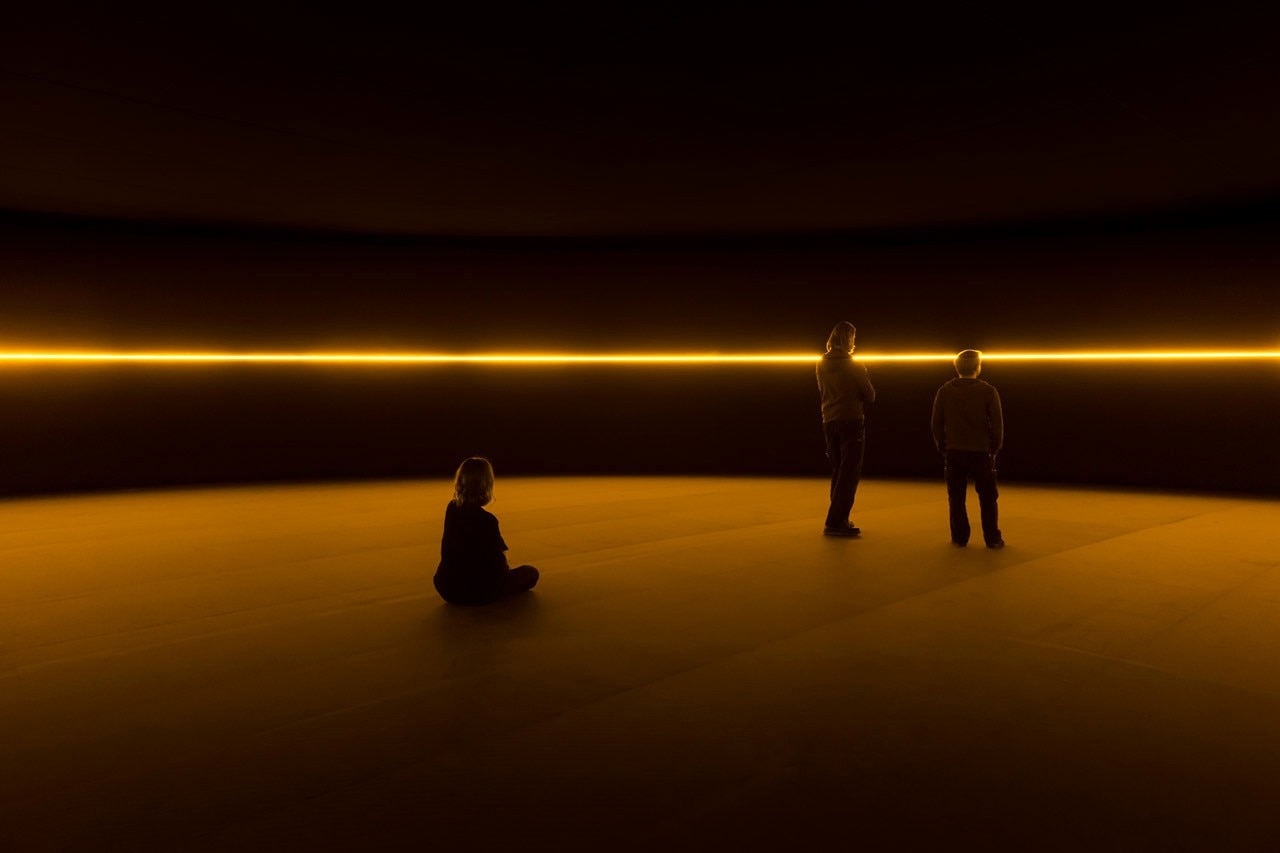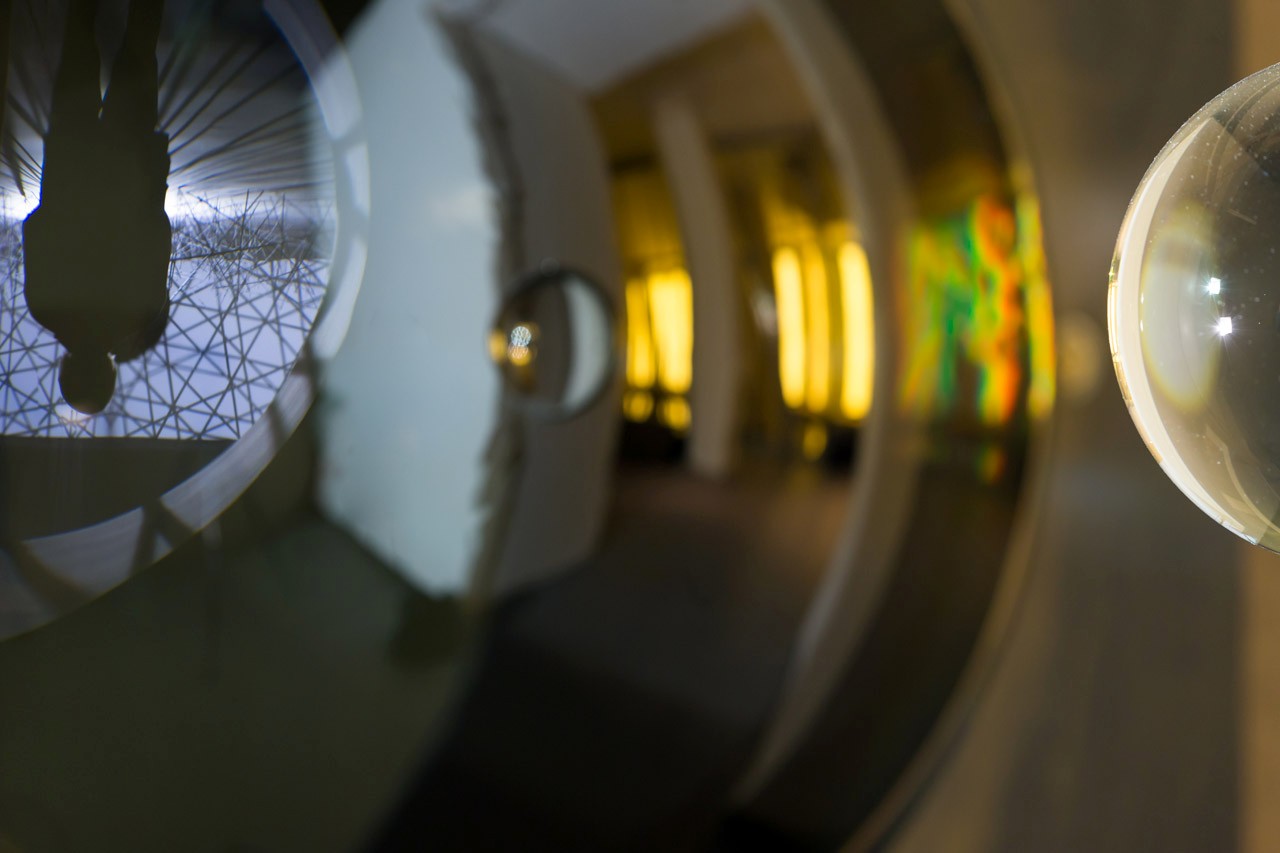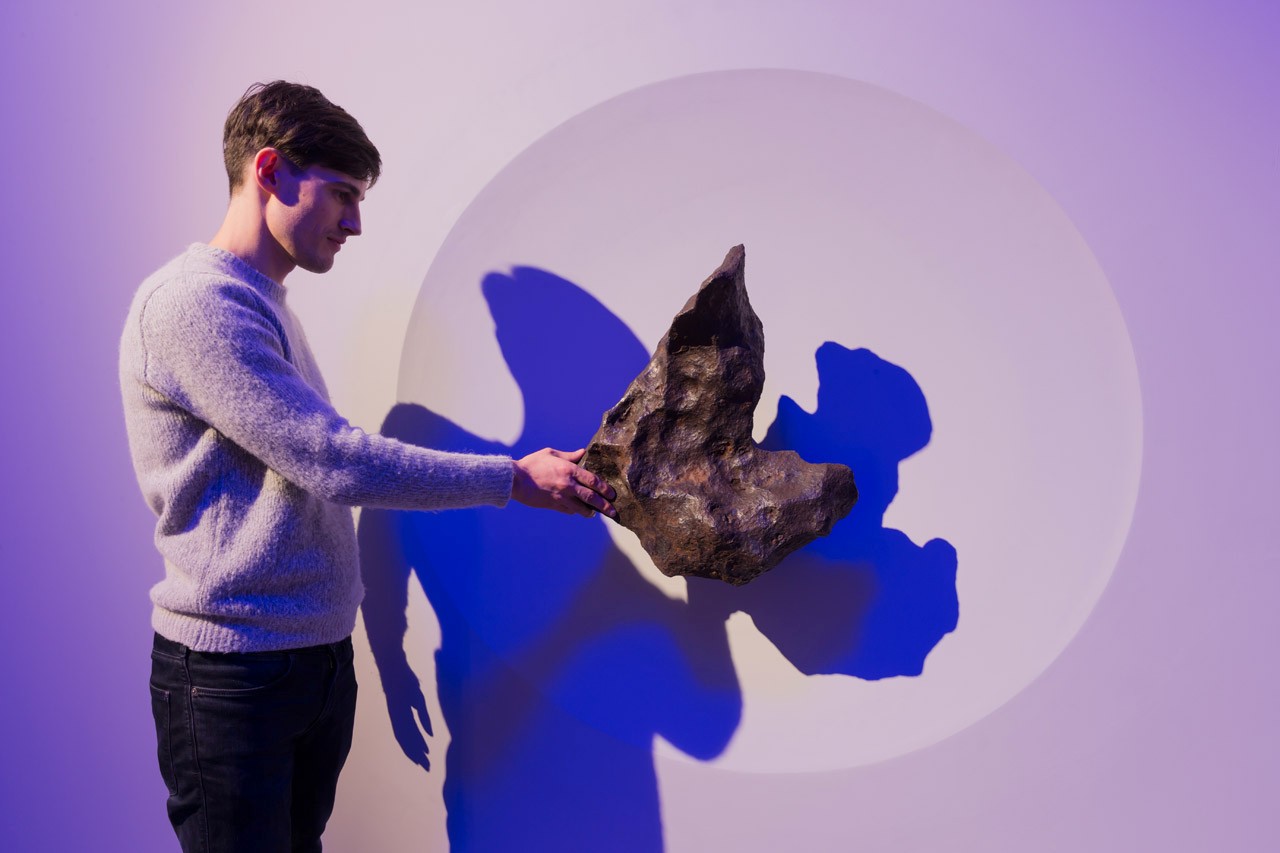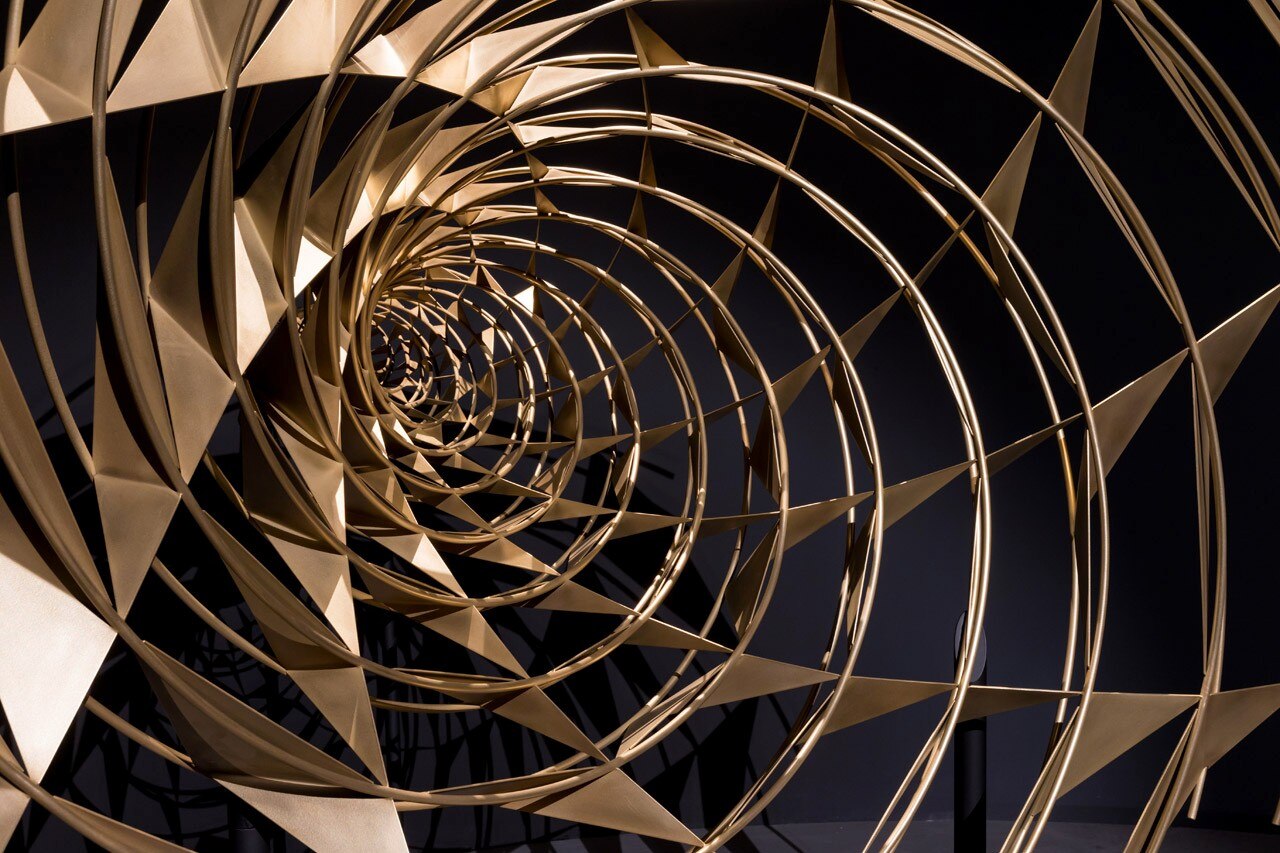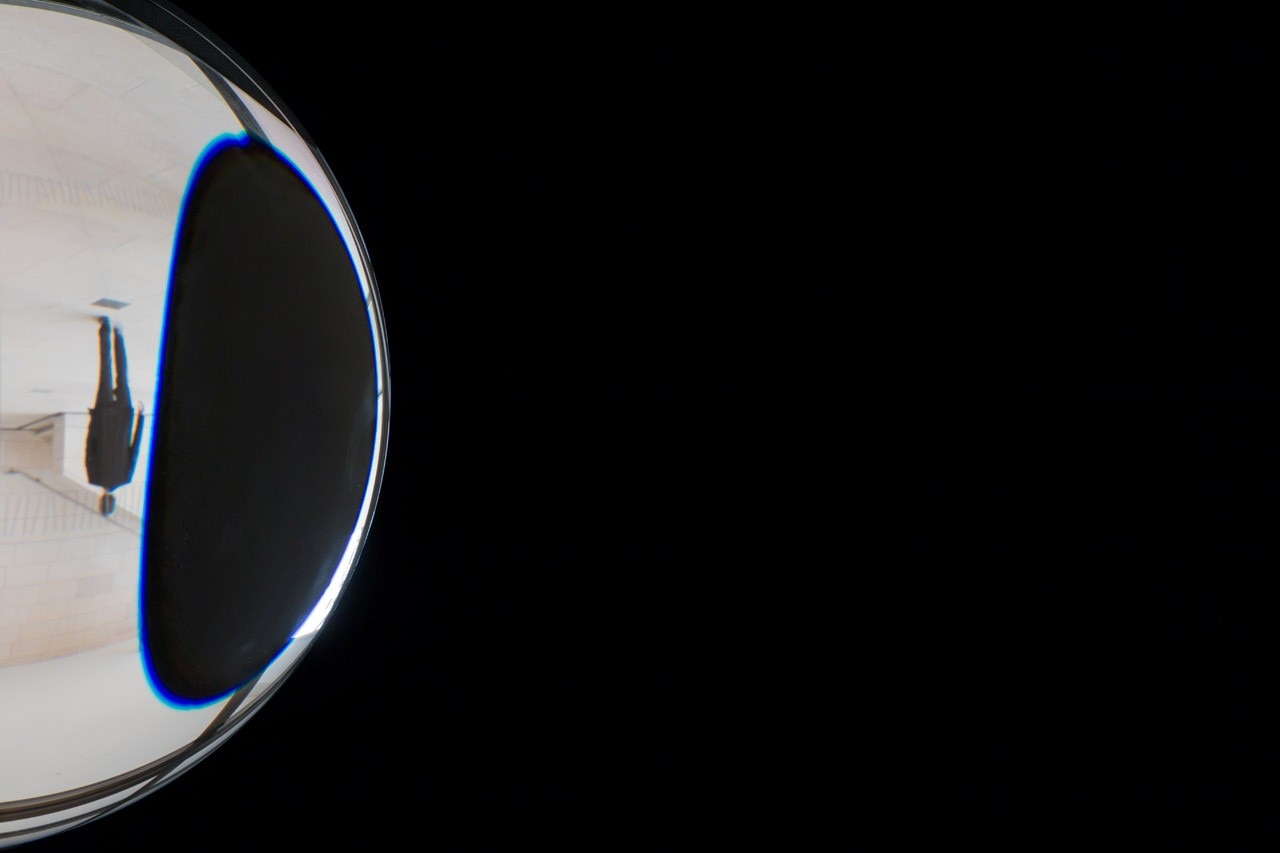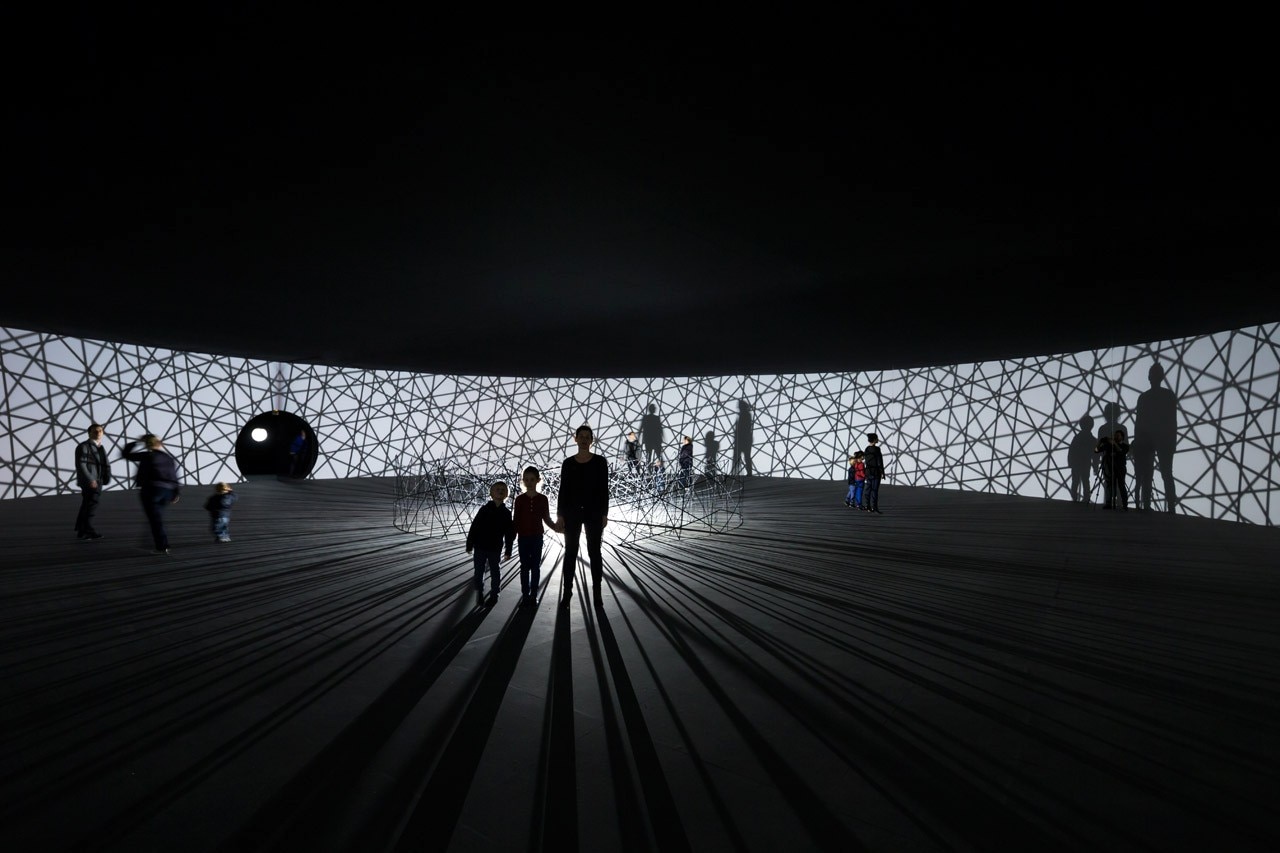
Here he recaptures the freshness of his less glossy beginnings, when at the Musée d’Art Moderne de la Ville de Paris twelve years ago, but with the same director Suzanne Pagé, a decidedly less tameable artist covered the floor with lava, which seems paraphrased today in the pitch black industrial sandpaper that envelops the installation.
In the tightly disciplined practice of Eliasson’s work nothing seems unvaried. Almost as in the title of the exhibition “every morning I feel different, every night I feel the same”, the artist and his studio invent a recapitulatory and cyclic work in black and instal its device in the heart of Frank Gehry’s architecture to produce a mise en abîime in contradiction to its magniloquent gesture, in favour of an individual, subjective fruition drenched with emotion. The walk with empathy is the prime quality of this show in which Eliasson forgets no detail, in the construction of a total experience of the work; he succeeds in linking the presence to other works displayed in the building, such as the alchemy of Sigmar Polke’s Cloud Paintings or the reference to Giacometti’s sculptures cleverly installed on the upper floors.
“Contact” is a trajectory that unwinds between a fragment of meteorite to be touched at the entrance, and immersion in the utter darkness of an astro-physical kind of inner-outer space, of which an orbital, almost elliptical route is provided but has no possible tangential exits.
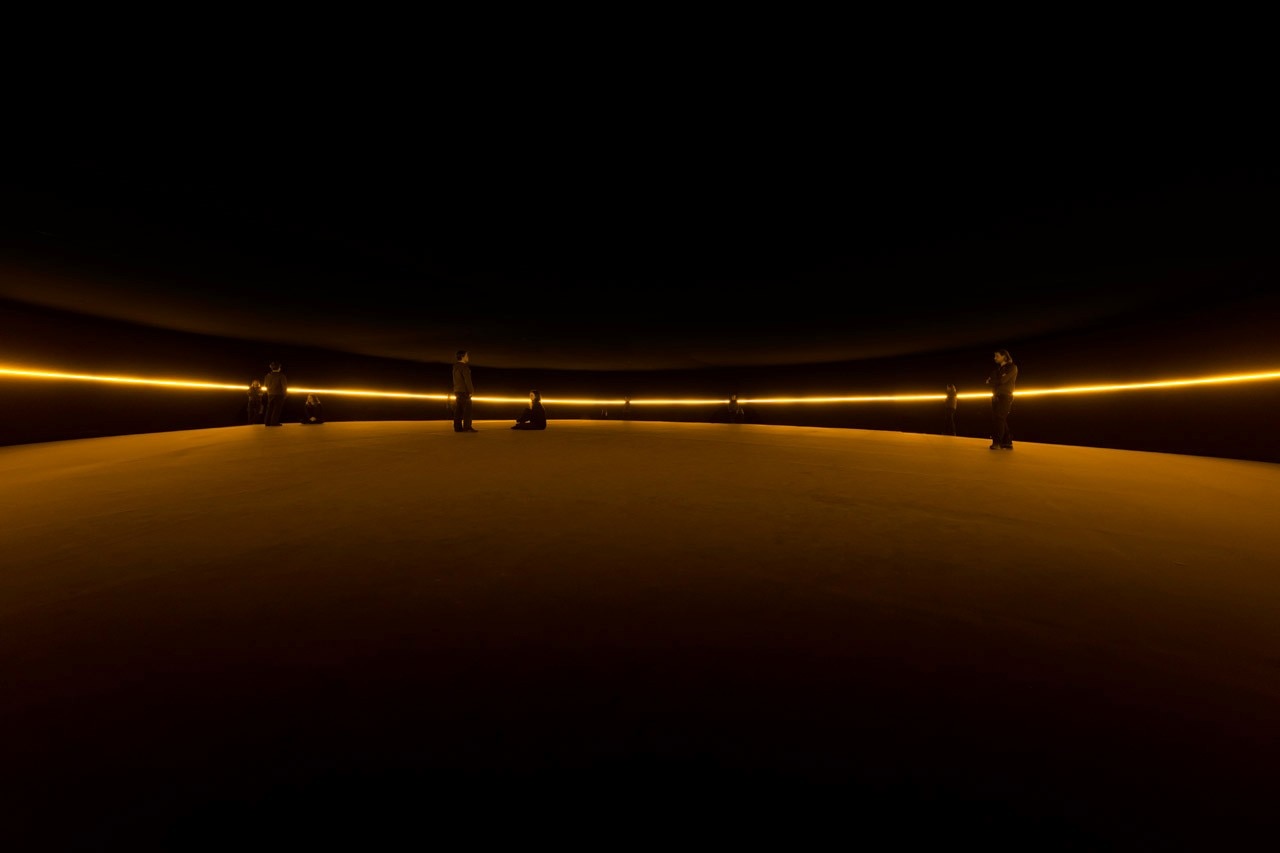
The space containing the exhibition thus becomes a relic and already the ruins of this museum can be contemplated, the immaculate whiteness of its Ductal cement being simply a phantasmatic presence. We see it reflected now and again in the spheres that look however like convex planes. This is the reticulated “map for unthought thoughts”, in which the presumed sphericity of the walkable space is revealed as a play of mirrors; and we ourselves become a reticulum, or rather, nothing more than reticulated shadows interacting with the surrounding space – almost like Giacometti figures projected into an image of science fiction. Cosmic existentialism, underscored by the unexpected arrival of a semispherical ground, perceived by one’s feet as the crust of a planet. An eclipse is in progress, reinforced by the passage of a light that cuts our horizon exactly as if another star was passing by. Paradoxically, we are walking in an indefinable space. Eliasson supplies us with a model of space.
Bridge for the future is a model that might explain this sensation of a vortex midway between the cyclone and the black hole. We are in fact in an absence of physicality and the almost total lack of any objectual dimension becomes the mainstay of this exhibition. The elements have to be reconsidered in their purest state, as if they were perceptive anchors, as do air or water, or the meteorite at the entrance remembered.
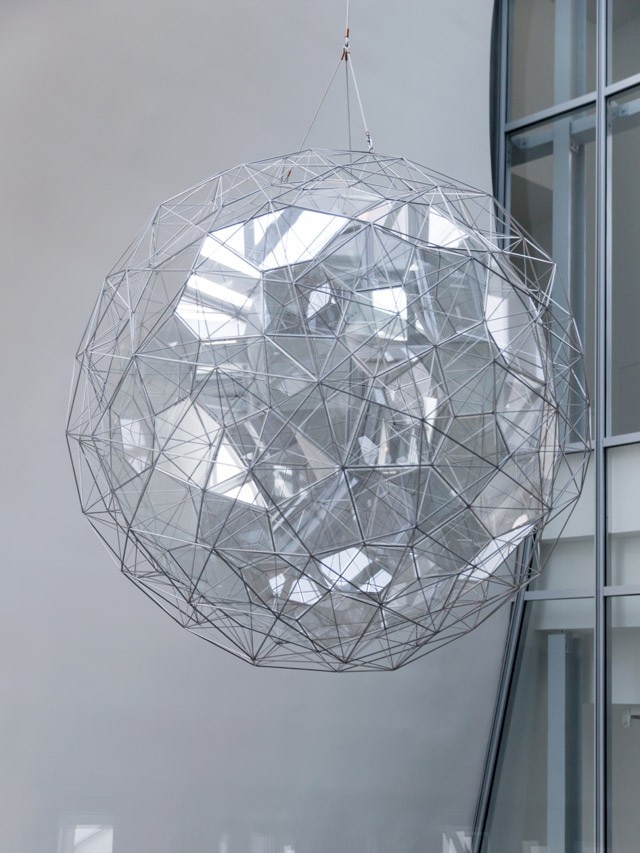
Once again however, we are contradicted by another work: Big Bang Fountain, a liquid flash that reflects the parallax planet perceived at the entrance and, in larger measure, the water that flows all around the Foundation. The water is simply an apparition under the light of a stroboscopic device, all within an ultramodern panorama, modelled by scientific assumptions and hinged on our absolute faith in the physical datum. The paradoxical act is this attempt to locate implemented by us and contradicted by Olafur Eliasson’s capacity not to think of nature as embedded in illustration and inviting us instead to experience it.
And so the eclipse is completed by an external circumnavigation of the grotto inside the horizon, where a sound installation by Samuli Kosminen and Eliasson himself echoes the sounds perceived within the exhibition. Again outside, in the search for an everlasting return, suspended in the heart of Gehry’s architecture is Dust particle, a glass sphere waiting for a tracer installed on the roof of the building to receive sunlight and intermittently to illuminate the museum hall. In the absence of that sunlight we can only seek consolation in the ecosustainable lamp named Little Sun, designed by Olafur Eliasson, a limited edition of which has been created for the occasion and is on sale in the museum shop.
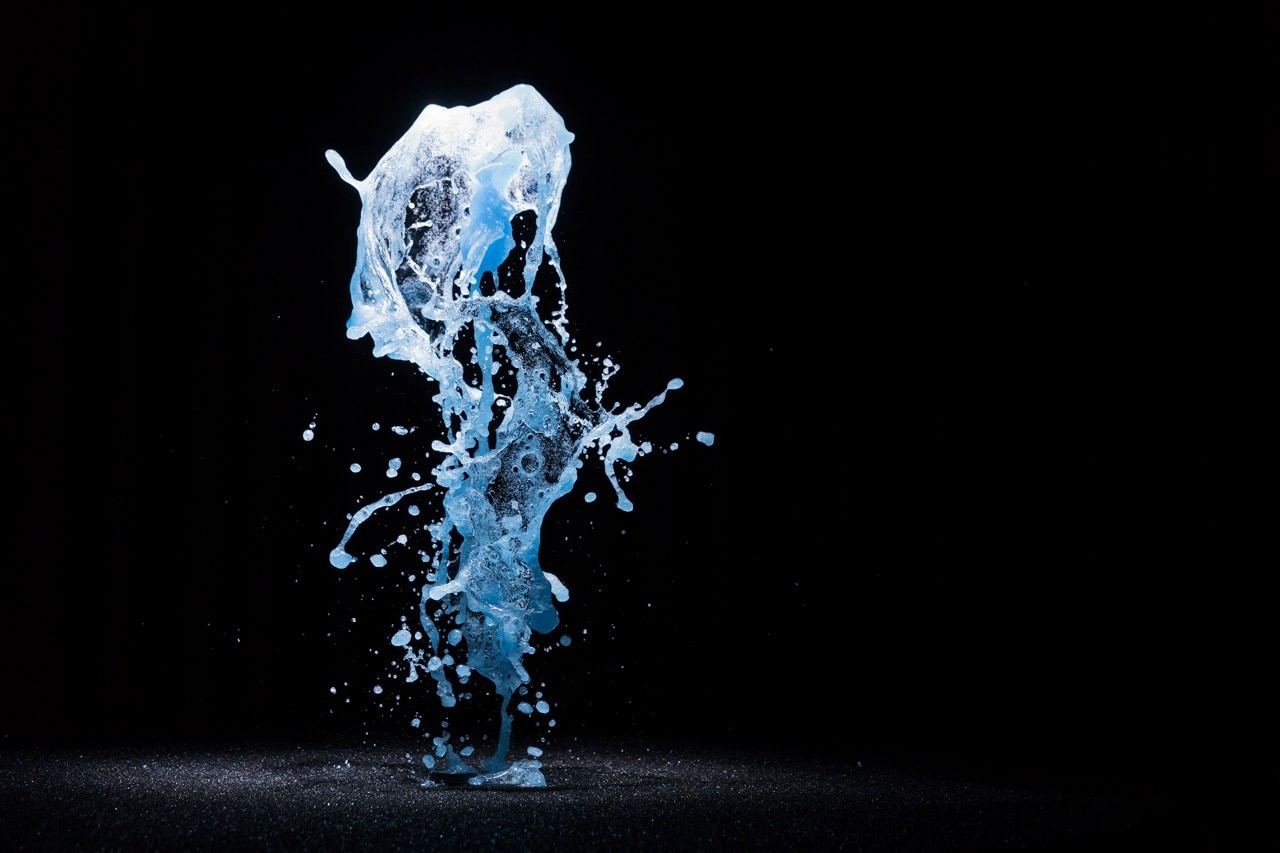
until February 16, 2015
Olafur Eliasson
Contact
Fondation Louis Vuitton
8 avenue du Mahatma Gandhi – Bois de Boulogne
Paris


